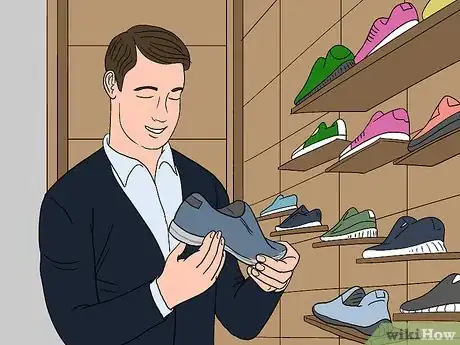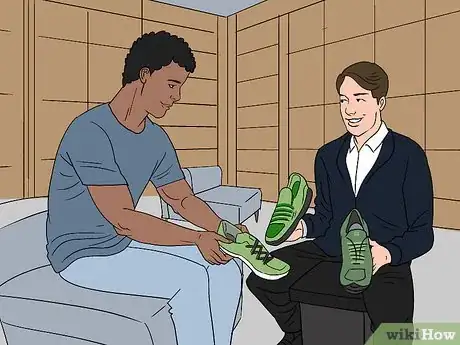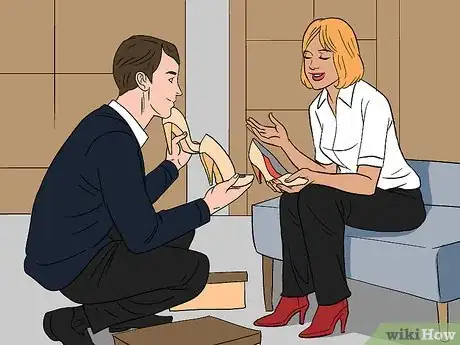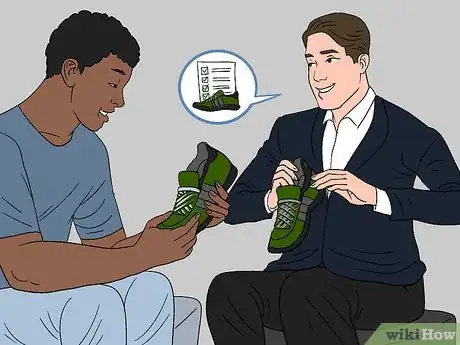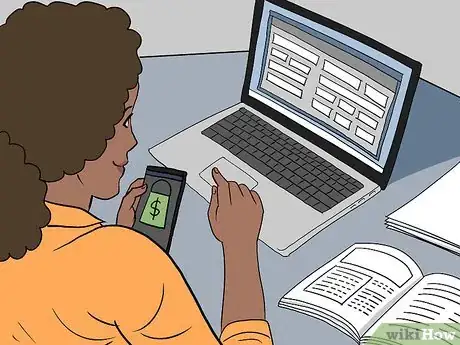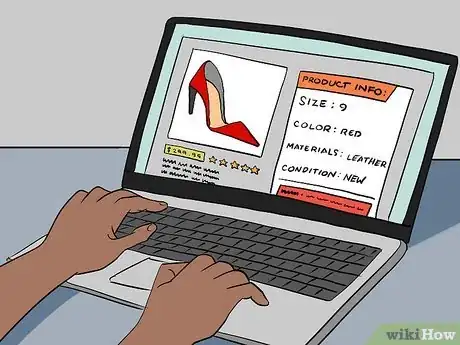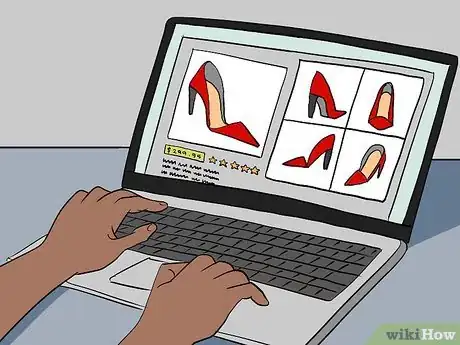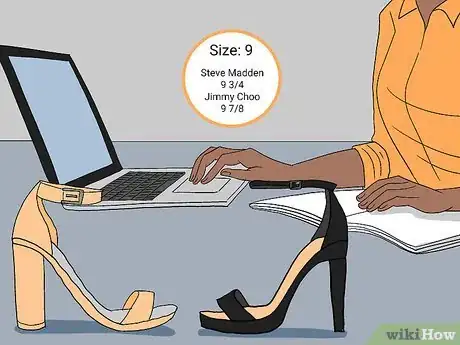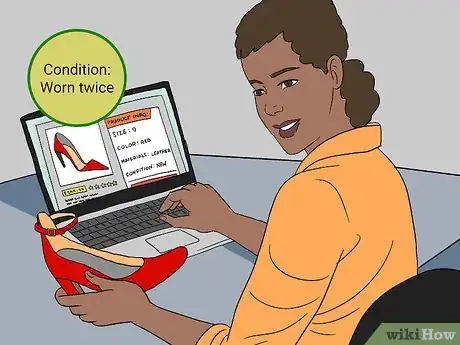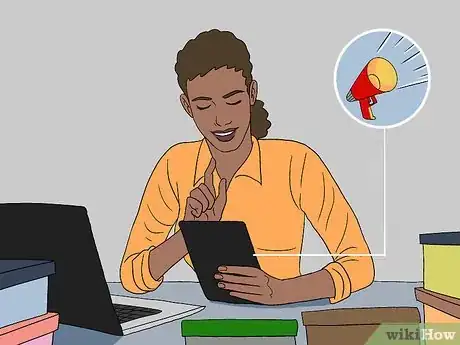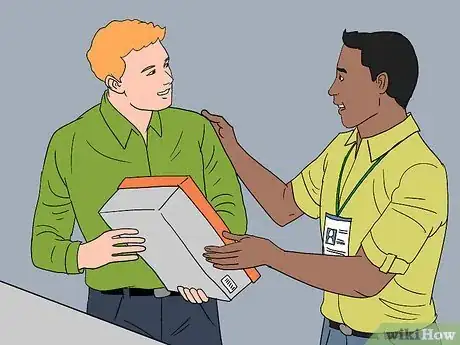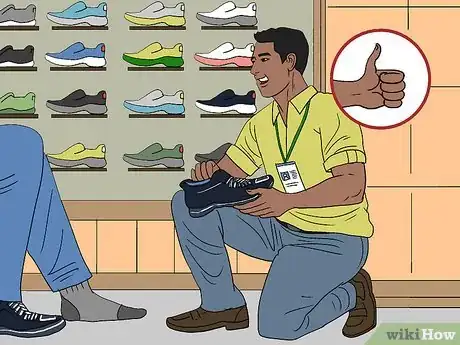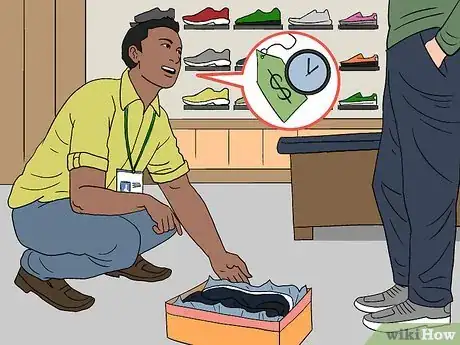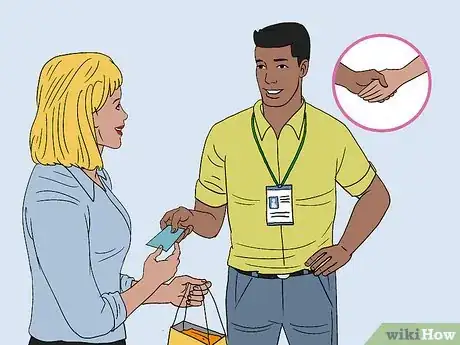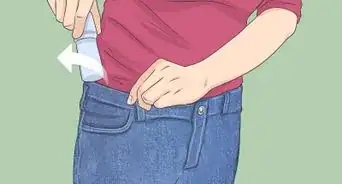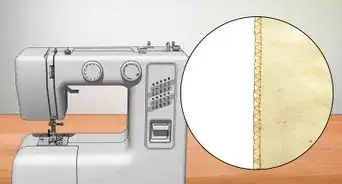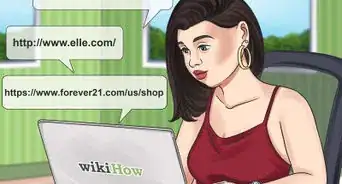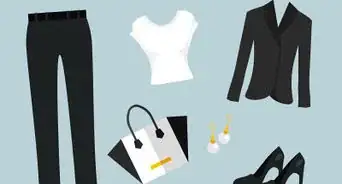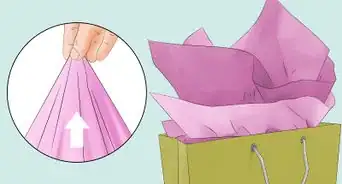wikiHow is a “wiki,” similar to Wikipedia, which means that many of our articles are co-written by multiple authors. To create this article, 16 people, some anonymous, worked to edit and improve it over time.
There are 15 references cited in this article, which can be found at the bottom of the page.
wikiHow marks an article as reader-approved once it receives enough positive feedback. In this case, 80% of readers who voted found the article helpful, earning it our reader-approved status.
This article has been viewed 85,194 times.
Learn more...
Everyone needs shoes and most of us have more pairs than we need. But how do you sell shoes to people that already have them? Whether it's in a store or online (and we'll cover both), the answer is with expertise and a smile. Those two things will lead to brand new customers becoming lifetime customers, ensuring the success of your business.
Steps
Selling Shoes in Person
-
1Understand your product better than your customer. Your customer is coming to you for knowledge, expertise, and the best shoe they could possibly wind up with. In this situation, you need to be the expert. Don't just show them the shoe, but also help them learn something new about the product. What materials is it made out of? What season is it from? What was it inspired by?[1]
- This can also help you offer them something else, should the first shoe they're drawn to not work. With an encyclopedic knowledge of everything you have to offer, you're bound to find something that catches their eye.
-
2Get to know who your consumer is and what they are looking for. With time, you'll slowly be able to recognize types of customers (generally speaking, of course). You'll recognize those customers with a sense of purpose and those customers who are just browsing, those that know exactly what they're looking for and those that haven't a clue. But beyond this, ask them questions. Get to know them. When you have their information handy, it ultimately saves them time and money![2]
- Aim to greet and meet every customer that walks in your door.[3] Smile and get to them as soon as possible, but without pouncing, to start building a relationship. Give them a second to evaluate the store and then ask how their day is going and how you can help.
Advertisement -
3Have the customer sit to try on the shoes. Offer to measure both of their feet to make sure their size is 100% accurate. This will vary by brand a bit, too. While they are sitting ask them what the shoes are going to be used for to help you identify their needs and improve their experience.[4]
- Have your customer try on both shoes and walk around in them. If the shoes slide up and down on their feet or pinch their toes, offer to grab a different size or style.[5]
- Run to storage and bring back the shoes requested, possibly also bringing back pairs that are slightly bigger or smaller, just in case (especially if they said sometimes they go back and forth between two sizes).
-
4Offer selection. Let's say you have a customer that came in looking for a nude, matte heel. They pick out one and request you to go get their size. While you're retrieving that pair, get a few more nude, matte heels you think they might like. They might not even have noticed the others in their haste to find the perfect shoe.
- This goes double if you know of any shoes you don't have on display. This is why it's best to know your inventory like the back of your hand – there could be a sale in there that you wouldn't otherwise make.
-
5Educate your customer about the product. Teach them about the quality, fashion, comfort and value of their shoe; that way you can provide solutions and benefits to your customer. If you know of any feedback on that shoe, tell it to your new customer.[6] Let them know that other customers say it's super comfortable, or that one pair tends to outshine another, for example:
- In today's day and age, we're used to having all the information at our fingertips. There's an app for everything, answering all of our questions. But when it comes to the brick and mortar shoe store, you are the go-to guru. By giving them all information possible, you prevent them from returning the shoe, being unhappy with it and ensure they get what they're looking for out of something they could use daily.
Selling Shoes Online
-
1Get or create an inventory of shoes. In order to sell shoes, you gotta have shoes to sell. You could buy them directly from a distributor or you could even make them yourself. Just make sure you're getting them for a good rate!
- You'll need a variety of shoes in just about every size, and multiples at that. This is a large investment, especially if you can't sell them all. If you don't have thousands of dollars to spend on fancy kicks, team up with an existing shoe seller that needs your expertise.
-
2Open up a shop online. With technology these days, almost anyone is capable of almost anything. Whether you have three pairs of shoes to sell or 30,000, you can get your product online. You'll need some sort of storefront to do so – here are the major ones to consider:[7]
- Your own website
- eBay
- Etsy
- Craigslist
- Google Shopping campaign
-
3Include all the necessary details in the description of the product. No one will buy the shoe if they know nothing about it. If it's lacking in description, not only is it a deterrent to buy, but it comes off as shady, too, making your website or ad look sketchy – why would a seller purposefully withhold information? Here's what to consider:[8]
- List the manufacturer's original size and its international equivalents. If the original size is not known, list length and width measurements inside and out.
- Describe the color, type (dress, casual, athletic, etc.) and style (oxford, brogue, pump, etc.) as accurately as possible.
- List the materials the shoe is made from and describe the method of construction if possible.
- If the shoes are not new, describe the condition specifically noting any flaws.
-
4Give each shoe a few photos. Take clear, well-lit photographs from all angles and show as many as you can. Size is only important for fit. Shoe buyers are usually most interested in style, so photos are very important.
- Get good photos taken of your shoes, hiring a photographer if you have to. They should be realistic, but flattering. Make sure each shoe is against a white background and every detail can be seen from various angles.
-
5Include brand-specific differences, too. Sometimes brands differ in their sizing (length and width) from the norm. If this is the case, include these details, like the length of useable sole. That means measure the shoe inside along the insole from heel to toe. A 9 or 39 in one brand can differ significantly from another.
- Let's say a Steve Madden 9 may measure 9 and 3/4" while a Jimmy Choo 39 may measure 9 and 7/8". Small differences do matter, especially when buying through a screen. If you include the insole measurement it can save some back and forth questioning with buyers.
-
6If the shoes are used, be honest. When it comes to the condition of used shoes, give as accurate a description and documentation as possible. If the shoes are not new, "gently used or worn" can be rather non-descript. Explain how they are used – i.e. "worn twice; some wear on tread, minor scratches on heel, but leather upper pristine." This grants the customer a sense of solace and makes you appear responsible and honest.
- Include photos of any flaws or wear. This can help avoid an angry buyer down the line who may feel they were not well-informed and were duped.
- Small additions such as those to your listings can help avoid delayed contact with buyers or potential buyers who may have questions. The more complete your listing the more attractive it will be to others.
-
7Work out the appropriate shipping rates. If your shoes are a reasonable cost but your shipping rates are outrageous, your customers will find somewhere else to go that's more reasonable. Offer them several options, ranging from super-quick delivery to something cheaper and not so speedy. And make sure the shoes can get there without incurring any damage.[9]
- Sometimes you can ship items like shoes for less without the box. It's always nice for buyers to have more than one shipping option. Allowing them to choose if they want the original shoe box or not is a good option for saving a little on shipping.
-
8Offer deals and market your site. If you're a budding entrepreneur (and even if you're not), you'll need a way to get your shoes, well, on the feet of potential customers. Offer deals to first-time buyers and returning buyers. Purchase ad space on other websites, like Facebook. Get word of mouth going in your area so you can slowly expand your audience.[10]
- Shoes aren't in the same category as a lot of other things – they're something that customers are always looking for a discount on. If you're having trouble selling a specific style, brand, or size of shoe, slap a discount sticker on it. You may see it fly off your shelves at its new cost.
Closing a Sale
-
1Throw out a celebrity's name. Many humans are pretty basic when it comes to the art of persuasion. We all want to be fashionable, cool, and look good. If you say that Kobe Bryant or Kim Kardashian, for example, wears these exact brand of shoes, there's is a chance that that will perk up their interest. We often look to celebrities for cues on what's trendy, and this is the perfect time to put this factor to good use.
- That being said, for some people this can backfire. Try your best to read the customer. If they dress and act like they value being their own individual, you might want to stay away from the celebrities. Some people hear "Kim Kardashian" and they want to run in the opposite direction.
-
2Become their friend. We've all had experiences with salespeople that are sallow, unfriendly, and just don't seem to want to get a sale.[11] What do we, as the customer, do in that situation? Leave, generally. To get that sale, be friendly and personable. Talk about your own shoe woes if it's fitting. Make yourself a person that knows a lot about shoes and has plenty of experience that just so happens to be selling them, too. If you are friendly and open, they will likely trust you more – and return in the future.
- Customers need to be judged on their lifetime value, not the value of their current purchase. A high-roller that comes in spending $1,000 on one pair of shoes one time is less valuable than a lower-class customer that spends $50 on shoes once a month for the next few years. Keep this in mind when choosing which clients to gush over – it's not as obvious as it seems.
-
3Flatter them with comments on their style. When they're debating between which shoes to buy (or if to buy at all), keep throwing out the compliments (so long as they're believable, of course). If they're wearing fancy shoes, they are dressing to impress. Flatter them by saying, "I can tell that you are very classy," etc. If they're wearing Nikes, they are probably a casual or sporty kind of person. No matter what they are wearing, praise them. Let them know they should trust their buying choices.
- Praise how the shoes look on, too. That is, if they look good. If they're trying on multiple pairs, let them know which one looks best on them and why.
- Don't be ridiculous. If you have customer that clearly just rolled out of bed, don't compliment them on their hair and makeup. Talk to them about a shoe that compliments their hectic schedule and lather on the flattery when it slips on their foot. They look like they're getting ready for the red carpet know, don't they?
-
4Create a sense of urgency. If you get a customer that seems to be dilly-dallying, you can try giving them a cause to buy and buy now. Either this special discounted price is going to be gone shortly or the shoe itself is about to be gone from the shelves. They can't wait – if they do, it'll be gone.[12]
- Try the "out of stock" trick. If you can see they are looking at a particular shoe, tell them you'll see if you have any more in stock. Go in the back, wait a few minutes, and come out triumphant! Tell the customer this is the "last" in stock and they are so lucky!
-
5Close the sale.[13] When you close the sale, remember to thank your customer for their business.[14] Give them a business card, let them know about any upcoming promotions, and tell them that if they have any problems at all, they should come back and you can work something out to make sure they're happy. Next time they need a pair of shoes (or friends of theirs need a recommendation on where to buy shoes), your name will be the first to come up.
- If possible, give them incentive to come in again. Have a promotion running where if you buy a product now, next month you can buy another pair at 1/2 off. Aim to turn your new customers into returning customers. And the more memorable you make their customer experience, the more likely this is to happen.
Community Q&A
-
QuestionWhy do so many people in retail think it's acceptable to use tricks to get customers to buy? It's not a skill, it's just dishonest.
 DonaganTop AnswererThis is a matter of supply and demand. In the case of most commodities, there is usually more supply than demand, which generates a lot of competition among vendors, which may in turn generate "trickery." The tricksters will tell you there is some skill involved...
DonaganTop AnswererThis is a matter of supply and demand. In the case of most commodities, there is usually more supply than demand, which generates a lot of competition among vendors, which may in turn generate "trickery." The tricksters will tell you there is some skill involved...
References
- ↑ https://www.business.qld.gov.au/running-business/marketing-sales/sales/skills/know-product
- ↑ https://www.infoentrepreneurs.org/en/guides/know-your-customers--needs/
- ↑ https://www.vendhq.com/blog/how-to-greet-customers-in-retail/
- ↑ https://www.retaildoc.com/blog/shoe
- ↑ https://www.footcaremd.org/resources/how-to-help/10-points-of-proper-shoe-fit
- ↑ http://customerthink.com/educating-your-customers-the-benefits-how-to-achieve-it/
- ↑ https://moneypantry.com/sell-shoes-for-cash/
- ↑ https://www.shopify.com/blog/8211159-9-simple-ways-to-write-product-descriptions-that-sell
- ↑ https://www.shopify.com/blog/shipping-and-fulfillment
- ↑ https://www.entrepreneur.com/encyclopedia/word-of-mouth-advertising
- ↑ https://hbr.org/2006/07/what-makes-a-good-salesman
- ↑ https://conversionxl.com/blog/creating-urgency/
- ↑ https://blog.hubspot.com/sales/sales-closing-techniques-and-why-they-work
- ↑ https://customerthink.com/you-closed-the-deal-now-what-6-things-to-do-after-the-sale/
- http://www.youtube.com/user/salesinfluence/playlists
About This Article
If you want to sell shoes, greet each customer who enters your store with a friendly smile. Ask the customer what they’re looking for, and ask the person about their hobbies and what they do for a living to learn about their footwear needs. A customer who works in an office building, for instance, might need comfortable dress shoes, while someone who rock climbs might need non-slip boots. Once you have an idea of what they’re looking for, measure the person’s foot, and have them try on the shoes to ensure a perfect fit. Read on to learn how to sell shoes online!
